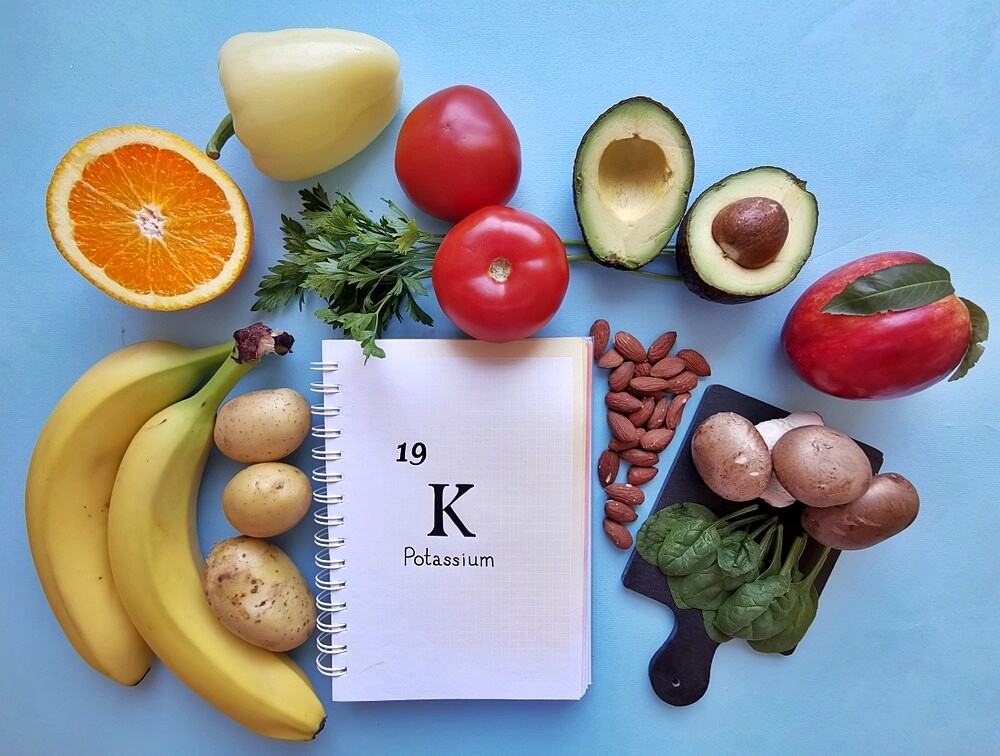Normally we take in enough potassium with our food. However, various causes can lead to a deficit. How does a potassium deficiency become noticeable? You can find out here which symptoms can occur.
What is potassium?
Electrolytes are small charged particles (ions) that are important for the distribution of fluids and the water balance in the body. Potassium is an electrolyte and belongs to the positively charged cations, just like sodium, calcium and magnesium, while chloride, bicarbonate and phosphate belong to the negatively charged anions.
Potassium is mainly found in the cells and is important for the electrical function of all body cells. It enables the transmission of stimuli between nerve and muscle – thus also the activity of the heart muscle. In short: Potassium is important for water balance, nerve conduction and muscle activity. We absorb the mineral through our food, it is excreted through the kidneys.
How does a potassium deficiency become noticeable?
Even though we normally consume enough of the mineral through a balanced diet, there are reasons that can cause a deficiency. The reasons for a potassium deficiency are very different: For example, diarrhoea, vomiting, sweating and blood loss can be responsible for electrolyte balance disorders. Certain medications (e.g. diuretics or laxatives), low-potassium diets (such as fasting) or kidney diseases can also lead to potassium deficiency. People who suffer from kidney disease, take dehydration tablets, have a weak heart or cardiac arrhythmia are therefore susceptible to potassium deficiency. In these cases it is important to have your potassium level checked regularly by your doctor.
You can tell a potassium deficiency from these symptoms
But how does a lack of potassium make itself felt? Various symptoms can occur:
- Concentration disorders
- Avolition
- Headaches
- Tiredness
- Insomnia
- Muscular weakness
- Constipation
- Cardiac arrhythmia with persistent deficiency
The symptoms do not necessarily indicate a potassium deficiency, as they can occur in various diseases. If a potassium deficiency is suspected, you should seek medical advice. You should also not take potassium preparations without consulting your doctor!
These foods are high in potassium
In most cases, a slight deficiency can be compensated for with food. Potassium can be found in most foods and is found in both animal and vegetable foods. Especially rich in potassium are for example:
- Apricots
- Bananas
- Carrots
- Kohlrabi
- Avocado
- Tomatoes
- Hazelnuts and peanuts
- Cashew nuts
- Almonds
- Wholemeal spelt, rye, buckwheat flour
How does a potassium deficiency become noticeable? The recommended amount
Normally we take in enough potassium with our food. The German Society for Nutrition (DGE) gives an estimated value for adults of 4000 mg potassium per day. In children and adolescents, the value varies between 400 and 4000 mg per day, depending on age.
Doctors speak of a potassium deficiency (hypokalemia) if the values are below the normal range. For adults, a value between 3.5 and 5.0 mmol/l in the blood is considered normal. Your doctor can determine whether you actually have a potassium deficiency. Your doctor will then compare the value with other factors, such as fluctuations over the course of the day.

